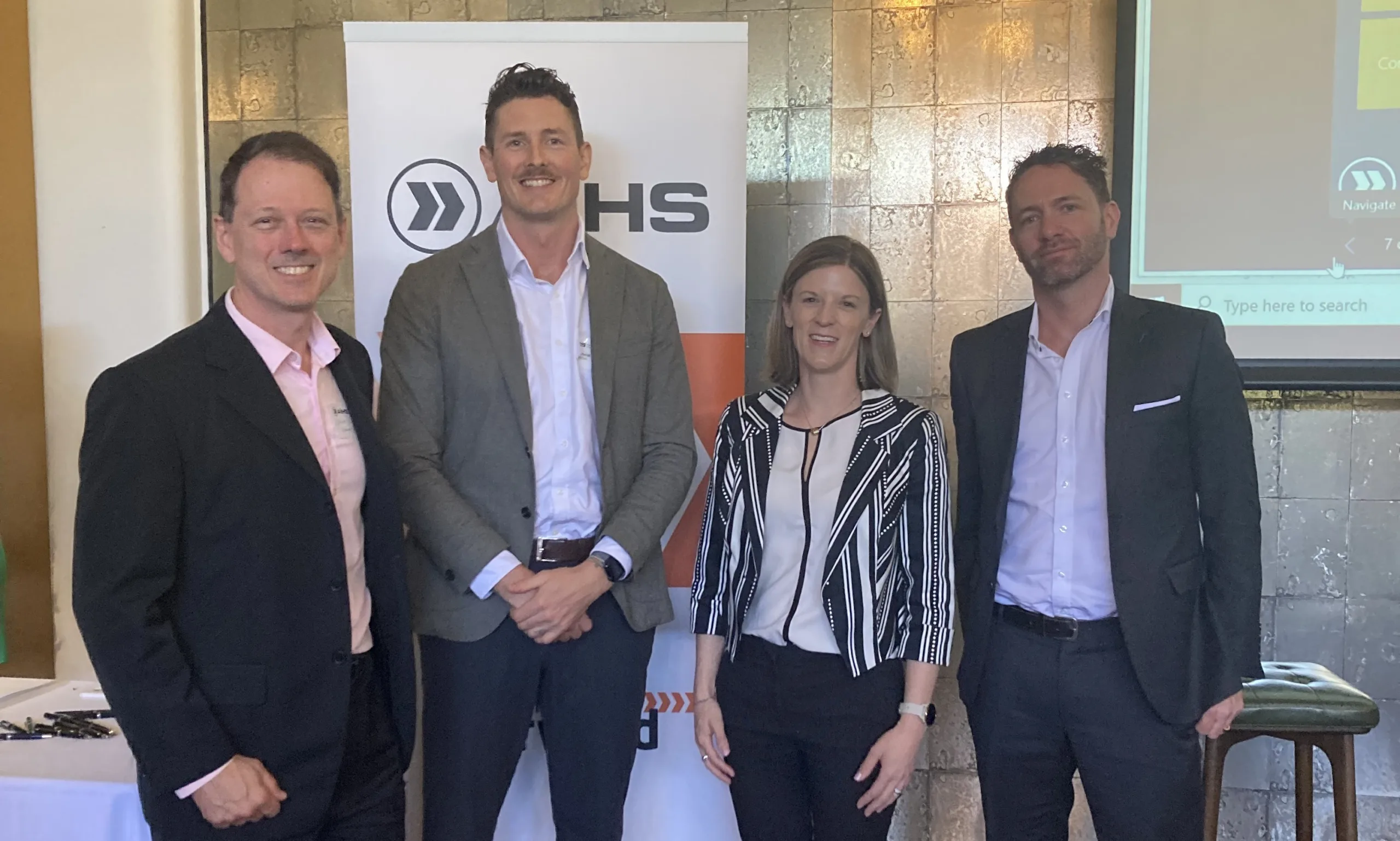AIHS ACT Symposium 2024 Panel Session Insights
Last Thursday our principal consultant Rachael Taylor moderated the AIHS ACT Symposium panel on Reimagining the Future of Workplace Health and Safety: Harnessing Technology and Mitigating Risk as We Plan for the Future.
The panel highlighted how emerging technologies, such as wearable devices, predictive analytics, and AI, are transforming risk management and safety practices. Experts shared lessons from tech implementations, emphasising the need for ethical integration, proactive troubleshooting, and ongoing education for WHS practitioners to keep pace with rapid advancements. This dialogue underscored the importance of blending innovation with strategic oversight to create safer, adaptive workplaces.
Panellists
The three panellists were:
Tim Gilchrist, Head of Zero Harm – Performance & Assurance for Downer Group, designing and delivering strategic programs of work across an ANZ portfolio of 13,000 employees and 2,000 service delivery partners.
Dr Emmanuelle Walkowiak, Dr Walkowiak has 20 years’ experience as an Economist studying how the rapid adoption of technologies drives the transformation of work and organisations. She is a Vice-Chancellor’s Senior Research Fellow at RMIT.
Stephen Lette, Head of Data, Digital and Insights for Endeavour Energy, is responsible for digital innovation, data science, data products and Geospatial and Network Modelling systems. Steve has over 30 years industry experience in a range of areas including Engineering, Design, Operational Technology, Data and ICT.
Interesting points from the panel discussion
While a range of topics were covered, outlined below are some of the interesting points and insights raised that are relevant for safety professionals.
- Integrated tech for safety:
- Tim Gilchrist shared two innovative technology projects that enhanced safety within business operations:
- Critical Risk App: A tool developed to manage and mitigate key workplace risks.
- Formula Zero: A gamified safety competition that encourages engagement and awareness around critical safety practices.
- Tim Gilchrist shared two innovative technology projects that enhanced safety within business operations:
- AI and diversity:
- Dr Emmanuelle Walkowiak highlighted how AI can promote diversity and inclusion by supporting employees through innovative communication tools. She also stressed the importance of accountability and transparency in AI, alongside practical applications like VR-based fire safety training.
- Electrical engineering innovations:
- Stephen Lette, with an electrical engineering background, shared two projects aimed at improving safety through technology:
- LIDAR mapping: Used to map transit routes and eliminate the need for manual clearance height checks near electrical infrastructure, reducing road-related risks.
- Drone inspections: With a chief drone pilot appointed to oversee the program, drones now perform inspections at heights, significantly lowering the risk of falls and electrical hazards for employees.
- Stephen Lette, with an electrical engineering background, shared two projects aimed at improving safety through technology:
Lessons and insights:
- Building skills: Implementing safety tech calls for skilled teams; options include hiring experts, adopting a cross-disciplinary approach, or involving IT support to facilitate WHS initiatives. Effective collaboration with IT can have a substantial impact on safety outcomes.
- Seamless operational integration: For successful uptake, safety technologies need to integrate smoothly with day-to-day operations. For example, registering as a Waze partner enabled Endeavour energy to feed roadside maintenance updates directly into Waze, offering real-time information to users.
- Incremental AI integration: Enhancing safety performance through AI, by linking it with current management systems like Lucidity or MS Teams, can provide measurable improvements without overwhelming employees.
- Good practices for technology implementation:
- Ensure governance frameworks and robust risk assessments are in place.
- Apply change management frameworks, like the ADKAR model from PROSCI, to support smooth transitions.
- Foster a mindset of curiosity—test boundaries and pilot technologies on a small scale before larger rollouts.
This panel highlighted that, while technology holds great promise for WHS, its success relies on careful planning, strategic integration, and a willingness to adapt.
If you’re interested in hearing more about the session outcomes or have a complex WHS problem you’d like to discuss, please reach out to us at [email protected].

